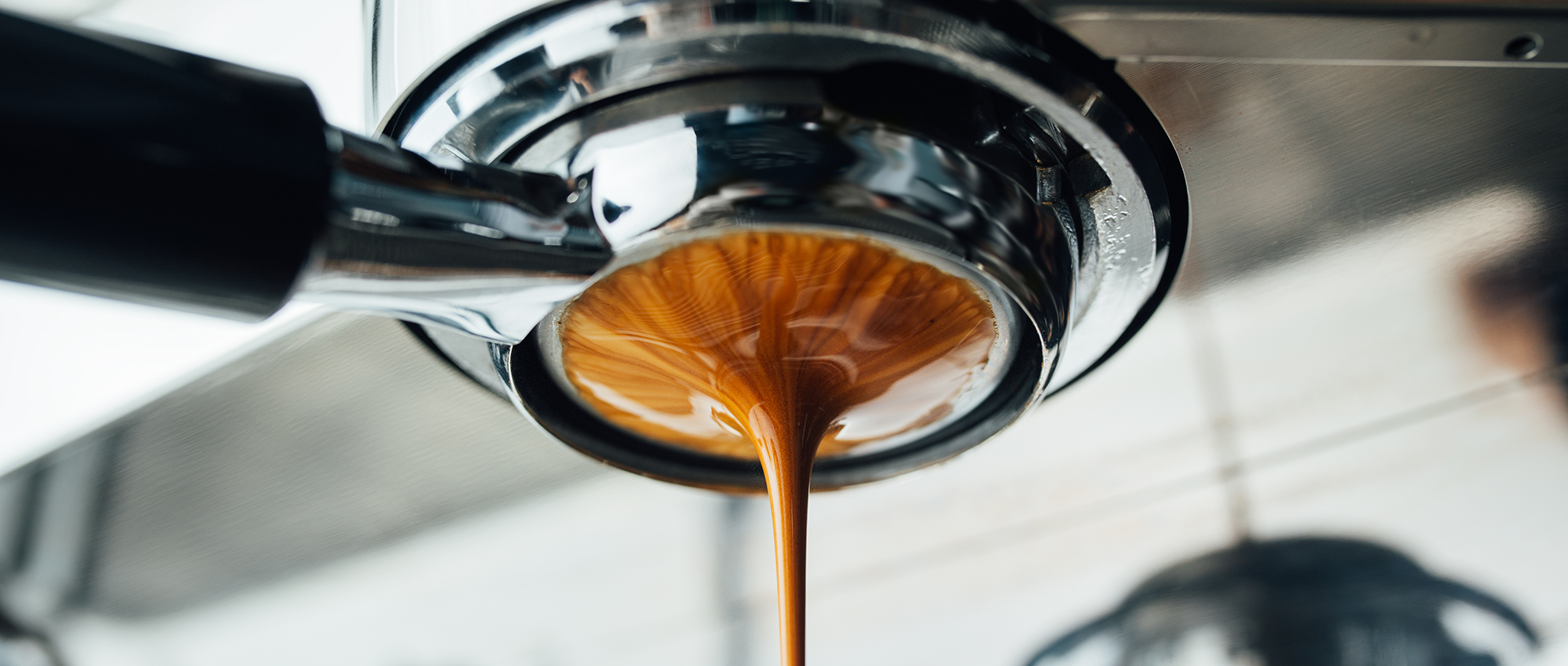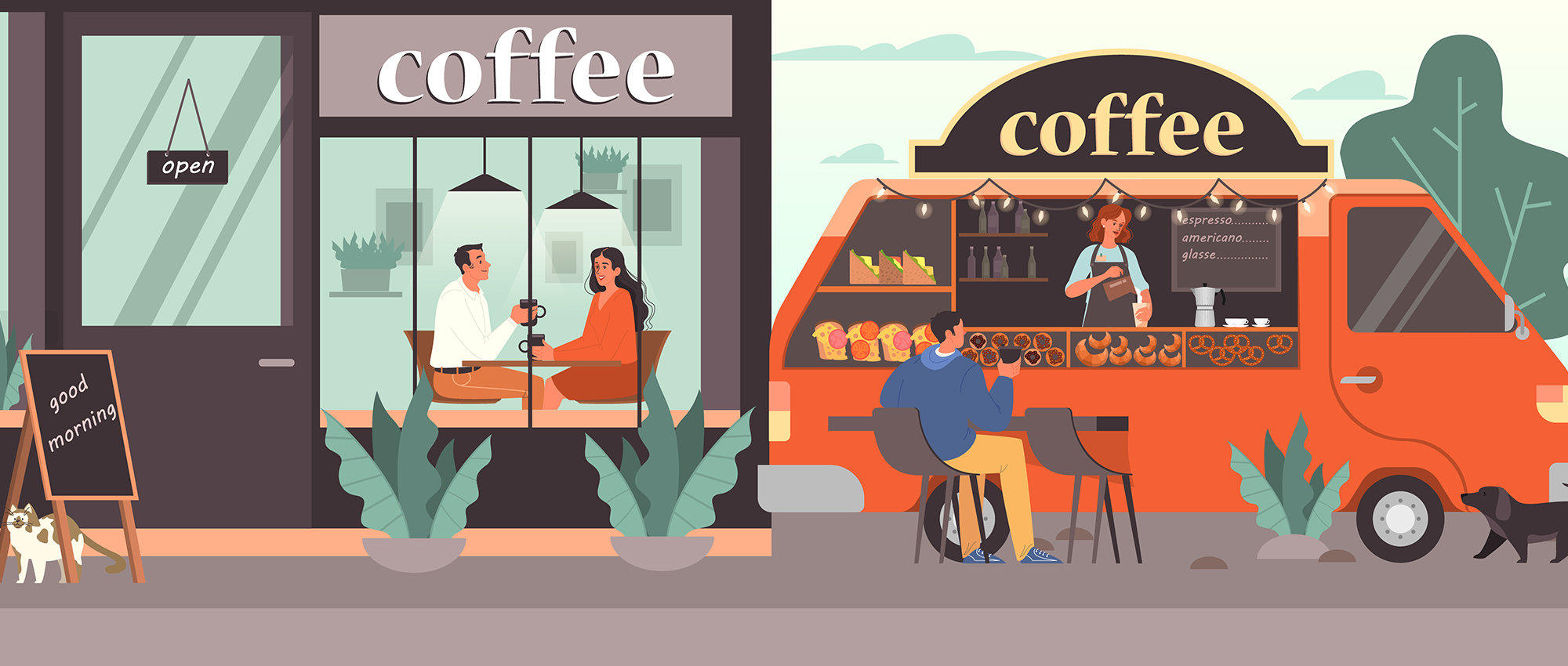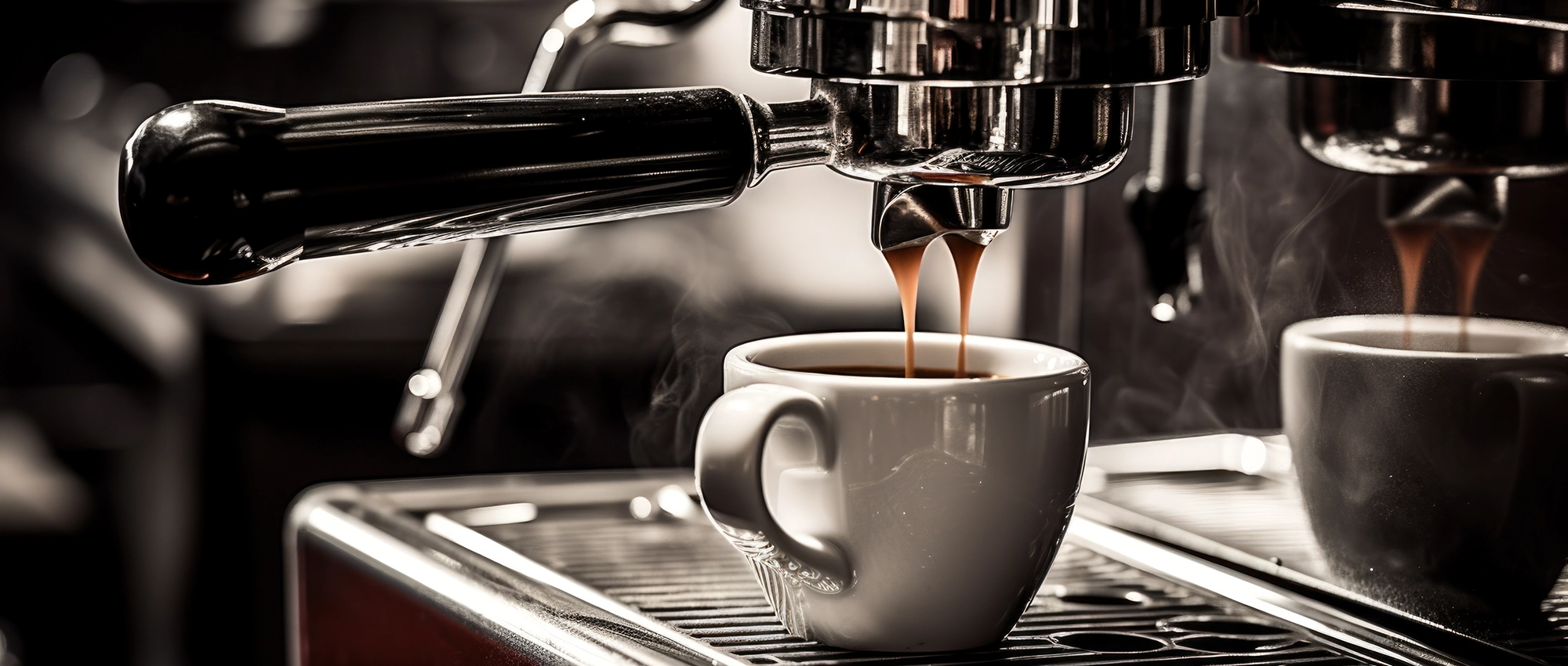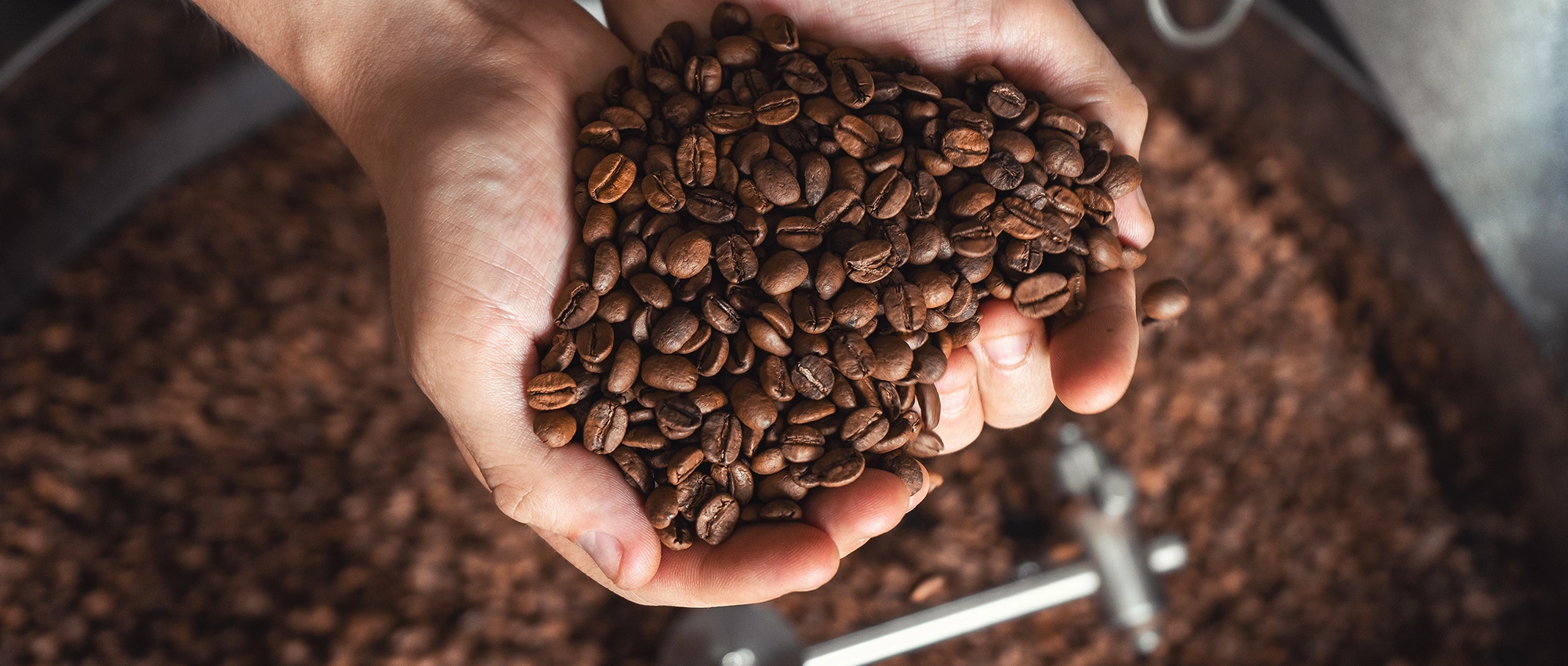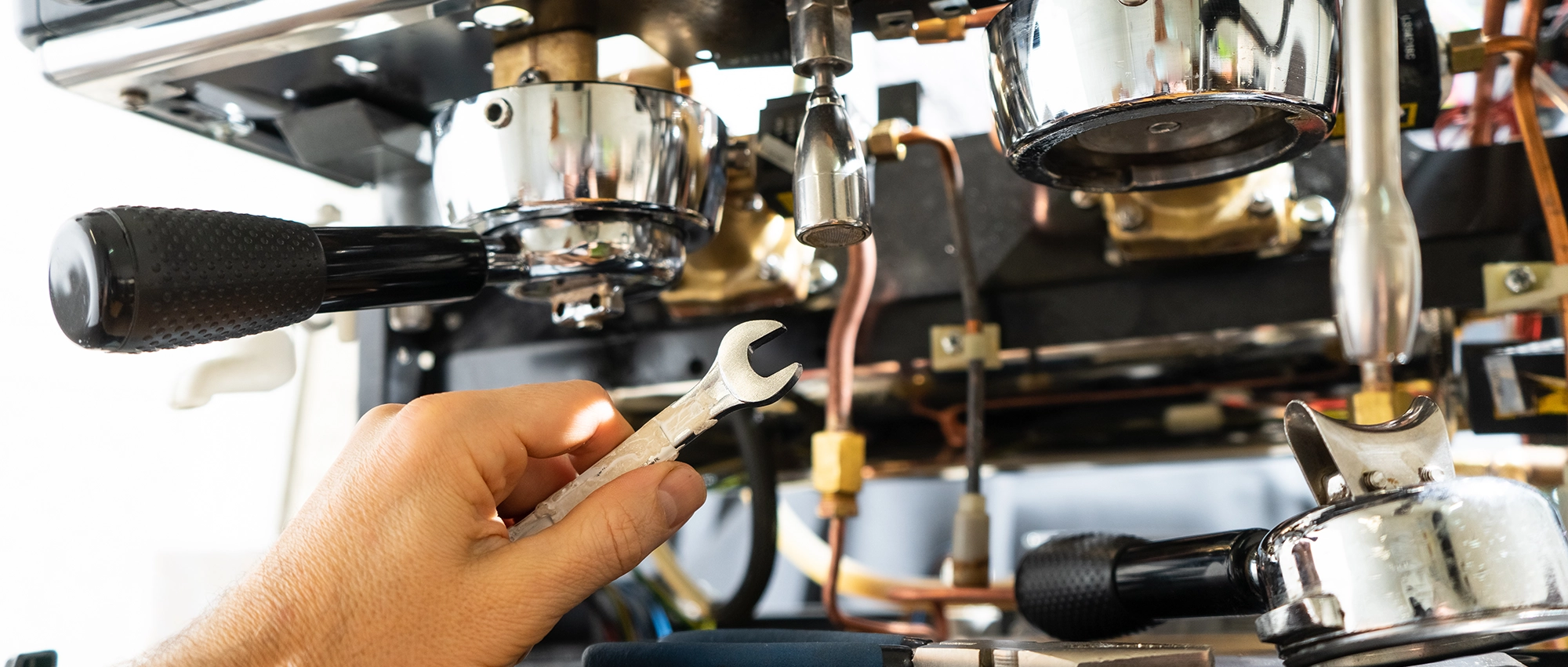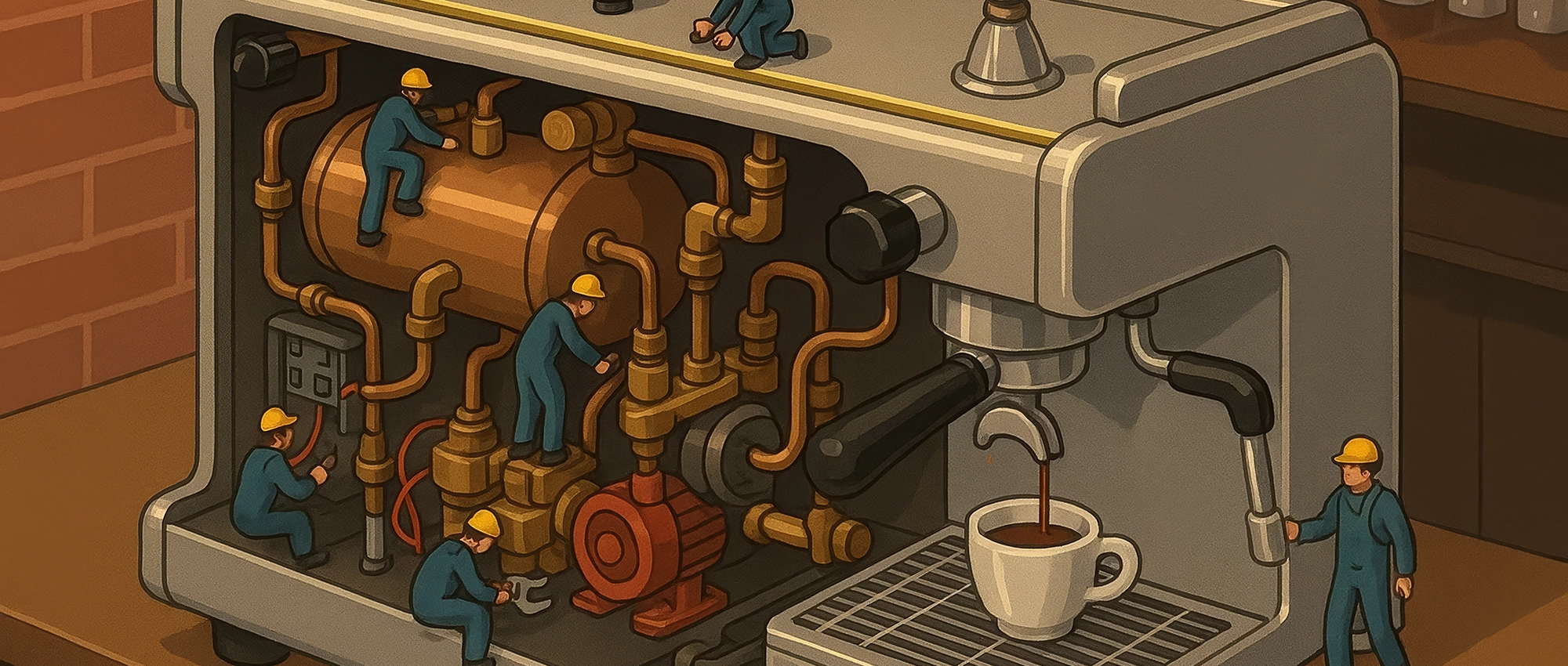1-Group vs 2-Group vs 3-Group: Which Espresso Machine Does Your Business Need?
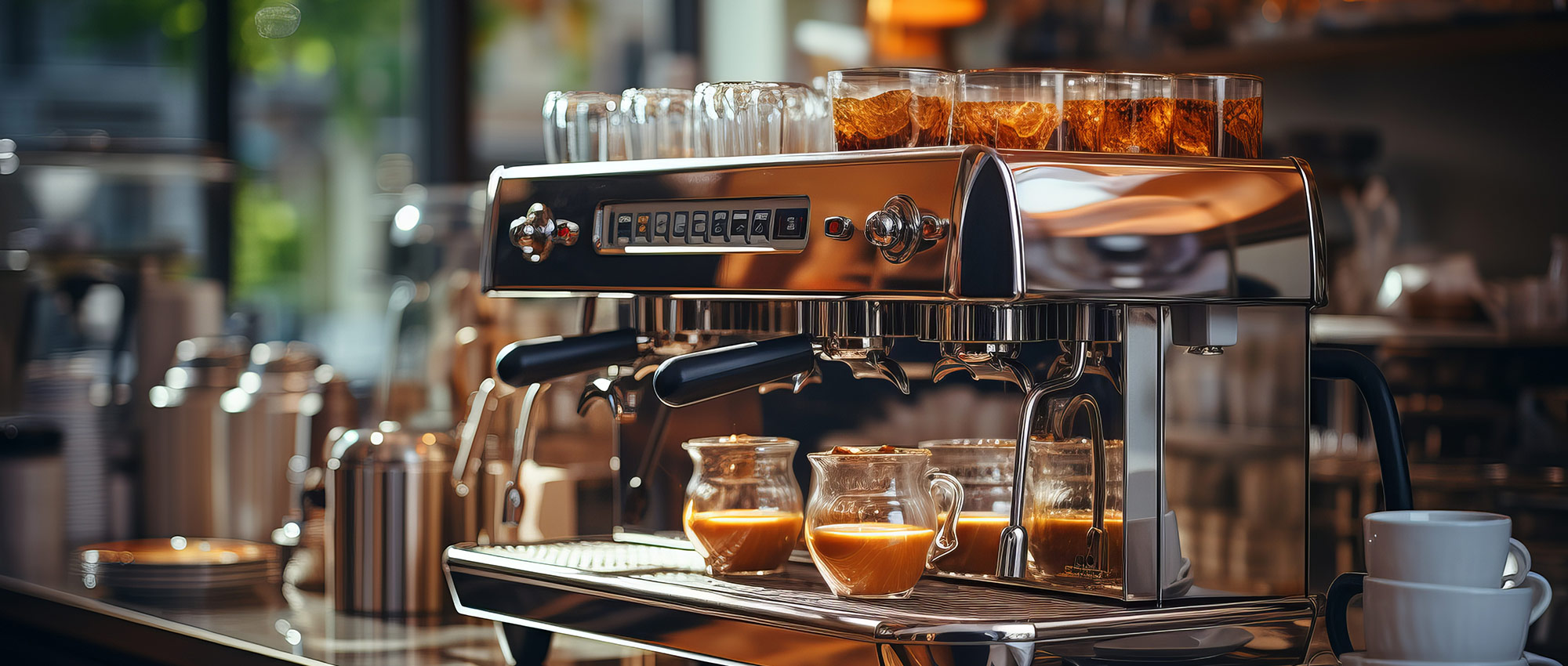
Commercial Espresso Machine Buying Guide: 1, 2, or 3 Group Heads Explained
Choosing the right commercial espresso machine is one of the most critical decisions you’ll make for your coffee business. Get it right, and you’ll have smooth operations with happy customers. Get it wrong, and you’ll face bottlenecks during rush hours, frustrated baristas, and potentially lost revenue.
One of the first questions you need to answer is: how many group heads do you need?
This article will help you make that decision based on your actual business needs, not just what looks impressive behind the counter.
What is a Group Head?
Before we dive into the comparison, let’s clarify what we’re talking about. A group head is the component on an espresso machine where the portafilter locks in and where water is dispensed to extract espresso. Each group head allows one barista to pull shots simultaneously.
A 1 group machine has one group head. A 2 group machine has two group heads. A 3 group machine has three group heads.
More group heads mean more capacity, but they also mean higher costs, more counter space, and greater complexity. The key is finding the right balance for your specific operation.
Understanding Your Volume Needs
The most important factor in choosing the right number of group heads is understanding your volume requirements. This breaks down into two key metrics:
Daily Volume: How many espresso based drinks do you serve per day?
Peak Hour Volume: How many drinks do you need to produce during your busiest hour?
Both metrics matter, but peak hour volume is often more critical. You can serve 200 drinks per day comfortably with a 1 group machine if they’re spread evenly throughout the day. But if 100 of those drinks happen between 7am and 8am, you’ll need more capacity.
1-Group Espresso Machines: When They Work
Best For:
- Small cafes with limited space
- Operations serving under 80 drinks per day
- Peak hours producing fewer than 30 drinks
- Single barista operations
- Limited budgets
- Home use or light commercial applications
Advantages:
Lower Cost: 1 group machines typically cost $4,000 to $15,000 depending on brand and features, significantly less than larger machines.
Space Efficiency: A 1 group machine typically occupies 18 to 24 inches of counter space, ideal for tight locations.
Simpler Operation: With fewer components, 1 group machines are easier to learn and maintain.
Lower Utility Costs: Smaller boilers mean less energy consumption and lower monthly operating costs.
Easier Cleaning: Fewer group heads mean less time spent on daily cleaning and maintenance.
Limitations:
Limited Capacity: You can only pull shots from one portafilter at a time. Even with a skilled barista, you’re limited to roughly 25 to 35 drinks per hour maximum.
No Redundancy: If your single group has an issue, your entire espresso program is down.
Growth Constraints: As your business grows, you may quickly outgrow a 1 group machine.
Real World Example:
A small bakery serving 50 espresso drinks per day, mostly spread throughout morning and afternoon hours, with one person handling coffee service alongside other duties. Peak hour sees about 20 drinks. A 1 group machine handles this perfectly without over investing in capacity they don’t need.
2-Group Espresso Machines: The Sweet Spot for Most Cafes
Best For:
- Small to medium cafes and coffee shops
- Operations serving 80 to 300 drinks per day
- Peak hours producing 30 to 80 drinks
- 1 to 2 baristas working simultaneously
- Businesses planning for growth
- Most restaurant espresso programs
Advantages:
Optimal Balance: 2 group machines offer the best balance of capacity, cost, and practicality for most commercial operations.
Flexibility: Two group heads allow one barista to work efficiently or two baristas to work simultaneously during rush periods.
Redundancy: If one group experiences issues, you can continue operating with the other group while repairs are made.
Room for Growth: A 2 group machine can typically handle 50% to 100% growth before becoming a constraint.
Industry Standard: Most commercial espresso machines are designed as 2 group units, giving you the widest selection of brands and models.
Reasonable Footprint: 2 group machines typically require 28 to 32 inches of counter space, manageable for most commercial spaces.
Capacity Expectations:
With proper workflow and skilled baristas, a 2 group machine can produce:
- 60 to 80 drinks per hour with one barista
- 100 to 120 drinks per hour with two baristas working efficiently
Investment Range:
Quality 2 group commercial machines range from $8,000 to $25,000 depending on brand, features, and technology level.
Entry Level Commercial: Rocket Boxer, Rancilio Classe 5, Astoria machines ($6,000 to $12,000)
Mid Range Professional: La Marzocco Linea Classic S, Nuova Simonelli Aurelia ($15,000 to $20,000)
Premium/High Tech: La Marzocco GB5, KB90 ($20,000 to $30,000)
Real World Example:
A specialty coffee shop serving 200 drinks per day with a peak morning rush of 60 drinks between 7am and 9am. One barista handles most periods, but a second person jumps on the machine during peak times. A 2 group machine provides exactly the capacity needed with room for growth.
3-Group Espresso Machines: High Volume Operations
Best For:
- High volume specialty coffee shops
- Large cafes serving 300+ drinks per day
- Peak hours producing 80 to 150+ drinks
- Operations with 2 to 3 baristas working simultaneously
- Businesses where espresso is the primary focus
- Multiple location operators wanting consistency
Advantages:
Maximum Capacity: Three group heads allow multiple baristas to work simultaneously without competing for access.
True Redundancy: If one group goes down, you still have two groups operational, minimizing service disruption.
Workflow Efficiency: With proper bar design, three groups allow optimal workflow with baristas not getting in each other’s way.
Professional Image: A 3 group machine signals serious commitment to coffee quality and volume capability.
Future Proofing: Unlikely to outgrow capacity even with significant business growth.
Capacity Expectations:
With proper staffing and workflow, a 3 group machine can produce:
- 80 to 120 drinks per hour with two baristas
- 140 to 180 drinks per hour with three skilled baristas working in sync
Considerations:
Significant Investment: 3 group machines typically cost $25,000 to $40,000 or more.
Space Requirements: Expect to dedicate 36 to 45 inches of counter space, plus additional room for barista workflow.
Higher Utilities: Larger boilers mean increased energy consumption and higher monthly operating costs.
More Maintenance: Three group heads mean more daily cleaning, more backflushing, and more components that require maintenance.
Overkill for Many Operations: Many businesses purchase 3 group machines because they look impressive, but never utilize the full capacity. This ties up capital that could be invested elsewhere.
Real World Example:
A busy specialty coffee shop in a high foot traffic area serving 400 drinks per day. Morning rush sees 120 drinks between 6:30am and 8:30am with three baristas working the machine simultaneously. Lunch brings another surge of 60 drinks in an hour. The 3 group machine is essential for handling volume without compromising quality or speed.
Making the Decision: A Practical Framework
Step 1: Calculate Your Volume
Daily Volume: Estimate your expected drinks per day. Be realistic, not optimistic. It’s better to slightly underestimate than overestimate.
Peak Hour Volume: Identify your busiest hour and estimate drink production during that period. This is your critical constraint.
Step 2: Consider Your Staffing
How many baristas will work the machine simultaneously?
- 1 barista most of the time → 1 or 2 group
- 1 to 2 baristas → 2 group
- 2 to 3 baristas regularly → 3 group
Step 3: Factor in Growth
What are your growth expectations over the next 2 to 3 years?
If you’re starting small but anticipate significant growth, it may make sense to buy slightly more capacity than you currently need. However, don’t over invest based on optimistic projections that may never materialize.
A better approach: Size for your needs plus 25% to 50% growth capacity. If you dramatically exceed projections, selling a 1 group and upgrading to a 2 group is better than tying up capital in an oversized 3 group you’re not using.
Step 4: Evaluate Your Space
How much counter space do you actually have?
Measure carefully and account for:
- The machine itself
- Grinder placement
- Knock box
- Milk pitchers and accessories
- Barista working space
A cramped workspace with a 3 group machine is worse than a well designed space with a 2 group machine.
Step 5: Consider Your Budget Realistically
Total Investment Includes:
- Machine purchase price
- Installation costs
- Grinder (often as expensive as the machine)
- Water filtration system
- Accessories
- Training
- Ongoing maintenance
Don’t stretch your budget to buy the largest machine possible if it means compromising on the grinder, filtration, or other essential components.
Decision Matrix
Here’s a simple framework to guide your decision:
Choose a 1-Group Machine If:
- You serve fewer than 80 drinks per day
- Peak hour is under 30 drinks
- You have one barista working coffee
- Space is extremely limited
- Budget is under $8,000 for the complete setup
- Coffee is supplementary to your main business
Choose a 2-Group Machine If:
- You serve 80 to 300 drinks per day
- Peak hour is 30 to 80 drinks
- You have 1 to 2 baristas working coffee
- You have standard commercial counter space
- Budget allows $12,000 to $25,000 for quality equipment
- Coffee is a primary or significant revenue driver
Choose a 3-Group Machine If:
- You serve 300+ drinks per day
- Peak hour exceeds 80 drinks
- You regularly have 2 to 3 baristas working simultaneously
- You have ample counter space and proper workflow design
- Budget allows $30,000+ for the complete setup
- Coffee is your primary business focus
Common Mistakes to Avoid
Mistake 1: Buying Based on Appearance
A beautiful 3 group La Marzocco looks impressive, but if you’re only serving 100 drinks per day, you’ve wasted money that could have been invested in a better grinder, training, or marketing.
Mistake 2: Underbuying Due to Budget
Conversely, trying to run a high volume operation with a 1 group machine creates bottlenecks, frustrated staff, and poor customer experience. If your volume requires a 2 group machine, find a way to make the budget work or reconsider your business model.
Mistake 3: Ignoring Peak Hour Capacity
Your daily average might suggest a 1 group machine is sufficient, but if you have a concentrated morning rush, you need capacity for peak periods, not average periods.
Mistake 4: Not Planning for Growth
If you’re opening in a great location with strong growth potential, buying at minimum capacity means you’ll need to upgrade sooner than expected. A modest capacity buffer is wise.
Mistake 5: Forgetting About Workflow
More group heads require more space for baristas to work efficiently. A 3 group machine in a cramped space creates collisions and inefficiency. Design your bar with workflow in mind.
What About Upgrading Later?
Many business owners ask: “Can I start with a smaller machine and upgrade later?”
The answer is yes, but consider:
Advantages of Starting Smaller:
- Lower initial capital requirement
- Match capacity to proven demand rather than projections
- Learn operations before investing heavily
Disadvantages of Starting Smaller:
- Disruption when upgrading (installation downtime)
- Selling used equipment at a loss
- Potential bottlenecks limiting growth
- Having to budget for replacement sooner than expected
The Middle Path: For most new businesses, a quality 2 group machine offers the best balance. It provides room for growth without massive over investment, and quality 2 group machines retain value well if you do eventually upgrade.
Special Considerations
Multiple Locations
If you’re operating or planning multiple locations, standardizing on 2 group machines across all locations simplifies training, maintenance, and parts inventory, even if some locations could operate with 1 group machines.
Dual Machine Setups
Some very high volume operations run two 2 group machines rather than one 3 group machine. This provides redundancy and can optimize workflow for specific bar designs. However, this requires significantly more space and investment.
Automatic vs Manual
The number of group heads you need doesn’t change based on whether you choose semi automatic or automatic machines, but automatic volumetric machines can improve speed and consistency, potentially allowing you to serve more volume with fewer group heads.
Beyond Group Heads: Other Capacity Factors
Remember, group heads are only one factor in your espresso capacity:
Grinder Capacity: Your grinder must keep pace with your machine. A high speed, high capacity grinder is essential for 2 and 3 group operations.
Steam Capacity: Multiple group heads are useless if you don’t have adequate steam power for milk drinks. Ensure your boiler size matches your group head count.
Barista Skill: A skilled barista on a 2 group machine will outproduce a novice on a 3 group machine. Invest in training.
Workflow Design: Proper bar layout, organization, and systems matter as much as raw machine capacity.
The Bottom Line
For most coffee businesses, a 2 group espresso machine is the right choice. It provides professional capacity without over investment, accommodates growth, offers redundancy, and represents the industry standard for good reason.
Choose a 1 group machine if you’re truly running a small, low volume operation or have space constraints. Don’t under buy just to save money if your volume requires more capacity.
Choose a 3 group machine only if you have demonstrated high volume demand, multiple baristas working simultaneously, and the space and budget to support it properly.
The best espresso machine for your business is the one that matches your actual needs, not the one that looks the most impressive or the one your favorite coffee shop uses.
Need Help Deciding?
At Bean and Brew Technologies, we help businesses throughout New Jersey, New York, Connecticut, and Pennsylvania choose the right commercial espresso equipment. We take the time to understand your volume, space, budget, and growth plans before recommending equipment.
We’re not interested in selling you the most expensive machine. We’re interested in selling you the right machine for your business, then supporting you with professional installation, training, and ongoing service.
Want to discuss your specific situation? Call us at 973-461-6864. We’ll ask about your volume expectations, peak hours, space, and budget, then provide honest recommendations based on what will actually work for your operation.
Your espresso machine is a significant investment. Make sure you get it right the first time.
Gary Downey
Gary Downey
Tags :
Coffee U Sunday: Weekly Coffee Business Education
Get expert coffee insights delivered to your inbox every Sunday. Equipment guides, brewing tips, business strategies, and industry trends to help your business succeed.
Categories
Categories
- Coffee Brewers (7)
- Coffee Business Success (6)
- Coffee Grinders (7)
- Coffee Shop Owners (7)
- Coffee Technology (3)
- Cold Brew Coffee (2)
- Espresso Machines (5)
- La Marzocco (1)
- Maintenance & Service (3)
- Specialty Coffee Drinks (3)
- Water Treatment (1)
📚 Equipment Guides
Comprehensive breakdowns of different machine types, helping you make informed purchasing decisions
 Maintenance Tips
Maintenance Tips
Professional techniques to keep your equipment running at peak performance and extend its lifespan
 Brewing Science
Brewing Science
Understand the ‘why’ behind extraction, temperature stability, and equipment design
 Troubleshooting Help
Troubleshooting Help
Common problems and solutions to minimize downtime and service calls
 Business Insights
Business Insights
ROI calculations, workflow optimization, and equipment selection for your specific needs
 Technology Explained
Technology Explained
Demystifying features like PID control, pressure profiling, and heat exchange systems
Coffee U Sunday: Weekly Coffee Business Education
Get expert coffee insights delivered to your inbox every Sunday. Equipment guides, brewing tips, business strategies, and industry trends to help your business succeed.
Share
Use our search function or browse by category to find exactly what you need. Can’t find an answer? Contact us directly, your question might inspire our next Coffee U article! As we grow, so will this resource, shaped by the real needs of coffee professionals like you.
Start exploring Coffee U today and discover why Bean & Brew Technologies is committed to elevating the coffee industry through education and exceptional service.
Have a question?
We're here to help.


